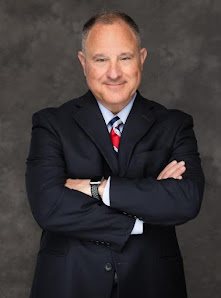Gerald Pizzuto is near death, but it’s unclear whether the cancer or the state of Idaho will get to him first.
For more than a year, the 65-year-old has been in hospice
care on Idaho’s death row, suffering from advanced bladder tumors, along with
Type 2 diabetes, and a variety of heart and lung diseases. According to his
defense team, he’s been prescribed 42 different drugs in the last year, and his
medical records say he has “begun experiencing memory loss and mild
disorientation associated with the death process,” reported The Marshall Project.
But on Thursday, the Idaho attorney general’s office
confirmed the state’s plan to execute him on June 2, for the 1985 murders of
two gold prospectors in the mountains north of Boise. If it goes through as
planned, this will be Idaho’s first execution in nine years.
Given the likelihood that Pizzuto will soon die of natural
causes, his case may stir up the recurring debates
about the cost of capital punishment in this fiscally conservative
state. His legal team has filed a petition for clemency, calling the execution
“an unnecessary exercise, with significant operational and personnel costs for
the State.”
“I don’t understand trying to kill somebody who is already
dying,” said his sister Angelinna Pizzuto.
Across the country, executions are growing less frequent
each year. But many of those facing execution are terminally ill, or simply
very old. While courts try to ensure that innocent people aren’t executed and
guilty people don’t face violations of their constitutional rights, the appeals
process has grown longer and longer. Federal data show
that people executed in 1987 had spent an average of just over seven years in
prison; by 2017, those executed had been on death row for an average of nearly
20 years.
“We’ve got death rows that are starting to feel like
assisted living,” said Bernard Harcourt, a Columbia law professor whose own
client, Doyle Hamm, was 61 and terminally ill with lymphatic cancer when
Alabama tried to execute him in 2018. Hamm’s failing health rendered it impossible
for prison officials to find a usable vein, even after hours
of poking that left him with a punctured bladder. Two months later,
the state executed 83-year-old Walter Moody, the oldest person put to death in
recent times.
In Ohio, officials tried and failed to execute Alva
Campbell, who was already dying of cancer.
He was unable to walk, used a colostomy bag and required four breathing
treatments per day. Officials called off the execution in 2017 after they could
not find a vein, and Campbell later died in his cell of natural causes.
Then in June 2018, Texas executed a confessed serial killer
named Danny
Bible, who shook
with Parkinson’s tremors as he lay on the gurney. Bible’s legal team had
argued, unsuccessfully, that he was too sick for execution because his “galaxy
of medical issues” would make the process more painful, violating the Eighth
Amendment's ban on cruel and unusual punishment.
For more than two decades, defense lawyers for death row
prisoners have argued that
long prison stays under the impending threat of death amount to “cruel and
unusual punishment,” and that lethal injection methods can cause excessive pain
to prisoners in ill health.
The most successful of these efforts have been about
dementia. The U.S. Supreme Court has ruled that people
cannot be executed if they don’t understand why. In 2018 the court agreed to
hear the case of Vernon Madison, who was facing execution in Alabama even
though he could not remember his crime, the 1985 murder of a police officer.
Alabama officials had argued that
executing Madison would still fulfill the primary purposes of the death penalty
— retribution and deterrence — and attorneys general in 14 other
states took their side in the case.
To read more CLICK HERE








No comments:
Post a Comment